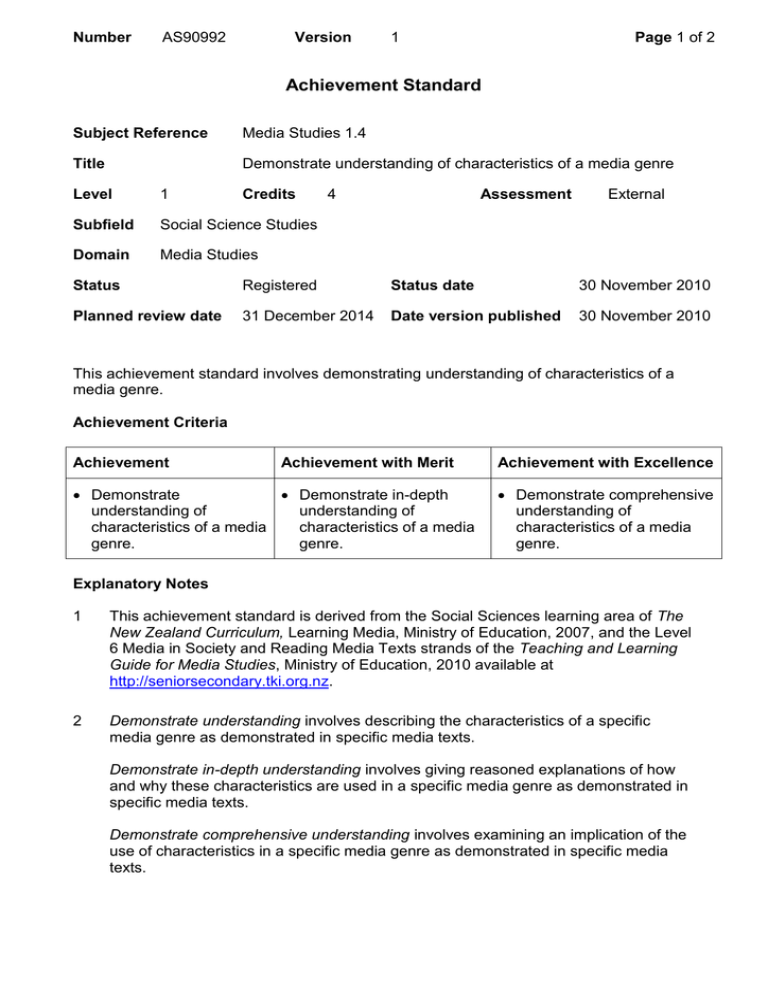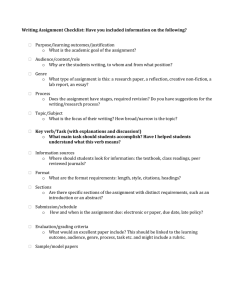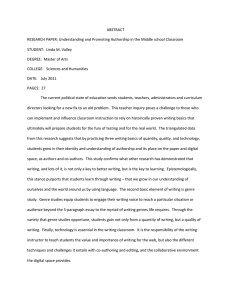Achievement Standard
advertisement

Number AS90992 Version 1 Page 1 of 2 Achievement Standard Subject Reference Media Studies 1.4 Title Demonstrate understanding of characteristics of a media genre Level 1 Credits Subfield Social Science Studies Domain Media Studies 4 Assessment External Status Registered Status date 30 November 2010 Planned review date 31 December 2014 Date version published 30 November 2010 This achievement standard involves demonstrating understanding of characteristics of a media genre. Achievement Criteria Achievement Achievement with Merit Demonstrate Demonstrate in-depth understanding of understanding of characteristics of a media characteristics of a media genre. genre. Achievement with Excellence Demonstrate comprehensive understanding of characteristics of a media genre. Explanatory Notes 1 This achievement standard is derived from the Social Sciences learning area of The New Zealand Curriculum, Learning Media, Ministry of Education, 2007, and the Level 6 Media in Society and Reading Media Texts strands of the Teaching and Learning Guide for Media Studies, Ministry of Education, 2010 available at http://seniorsecondary.tki.org.nz. 2 Demonstrate understanding involves describing the characteristics of a specific media genre as demonstrated in specific media texts. Demonstrate in-depth understanding involves giving reasoned explanations of how and why these characteristics are used in a specific media genre as demonstrated in specific media texts. Demonstrate comprehensive understanding involves examining an implication of the use of characteristics in a specific media genre as demonstrated in specific media texts. Number AS90992 Version 1 Page 2 of 2 Media genre means a group of media texts categorised through their commonly shared features. Examples include but are not limited to: teen magazines (print) western movies (film) documentaries (film/television) soaps (television) breakfast shows (radio) social networking websites (internet). Characteristics of a media genre include aspects of the particular use of the shared stylistic, technical, symbolic, and/or narrative elements that comprise the conventions of a genre, for example: Print News Stories: short headlines, active voice, present tense, 5 Ws and H opening sentence, inverted pyramid structure. American Teen Films: school location, social hierarchy, school prom, stereotypes, contemporary soundtrack. Breakfast Radio: 2–3 announcers, banter, jokes, competitions, give-aways, regular short news updates, fast pace. An implication is a likely consequence and/or conclusion that can be drawn from evidence and could include effects or impacts. Implications may include but are not limited to: connections to audience appeal (human emotions, desires and wants) commercial considerations representation genre hybridisation fandom. Reasoned means a logical argument supported by specific evidence. 3 Assessment Specifications for this achievement standard can be accessed through the Media Studies Resources page at http://www.nzqa.govt.nz/qualificationsstandards/qualifications/ncea/ncea-subject-resources/. Quality Assurance 1 Providers and Industry Training Organisations must be accredited by NZQA before they can register credits from assessment against achievement standards. 2 Accredited providers and Industry Training Organisations assessing against achievement standards must engage with the moderation system that applies to those achievement standards. Accreditation and Moderation Action Plan (AMAP) reference 0233


